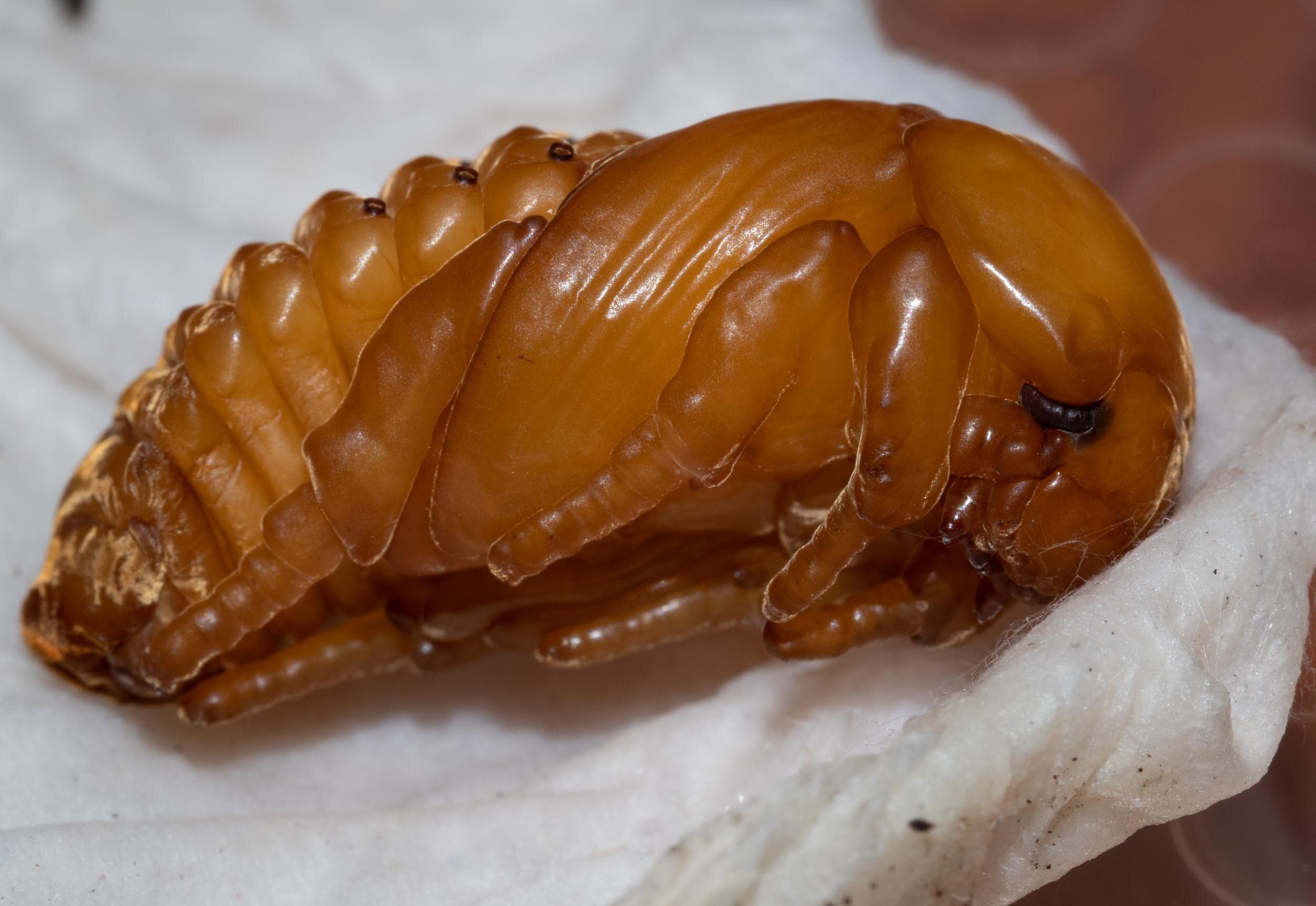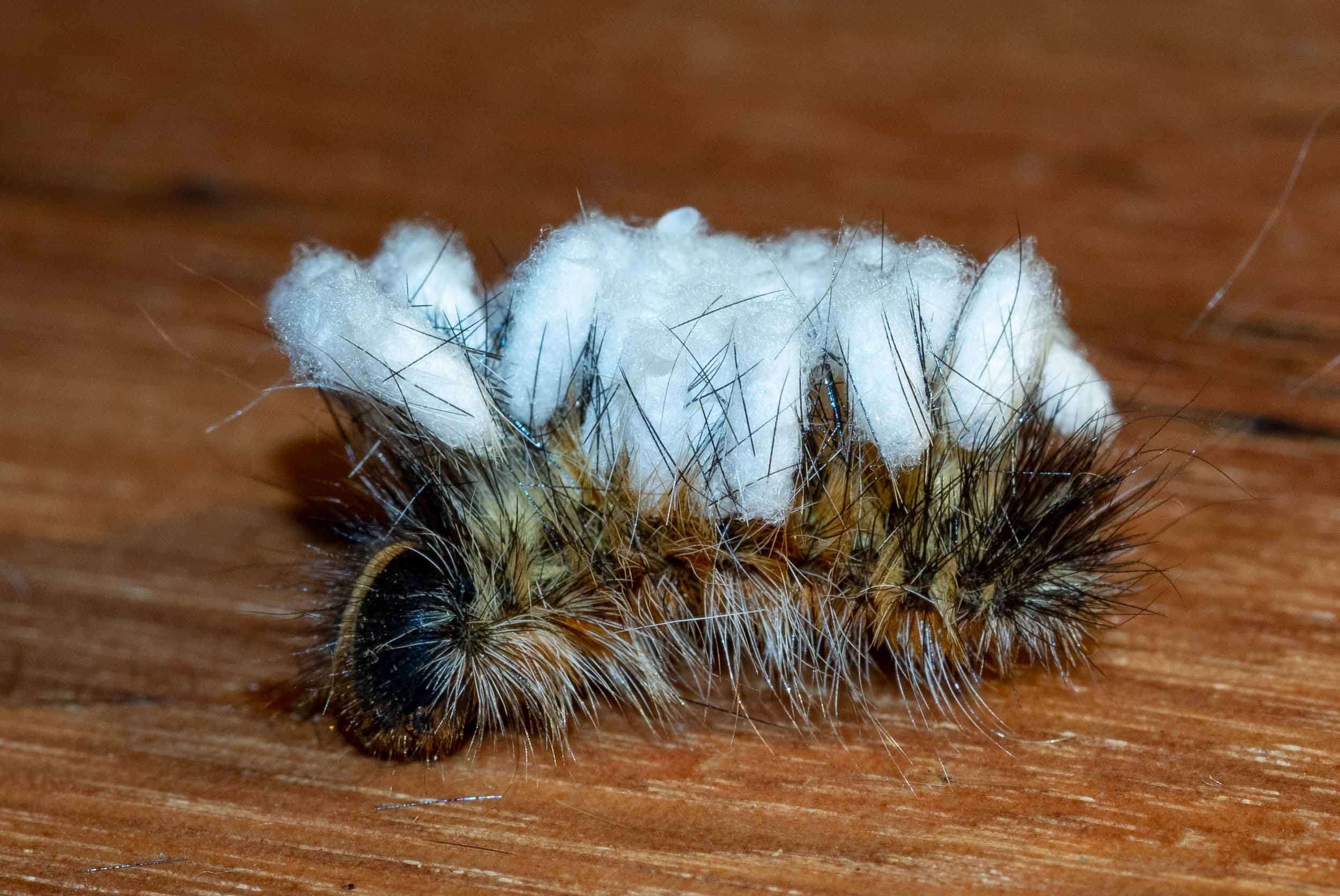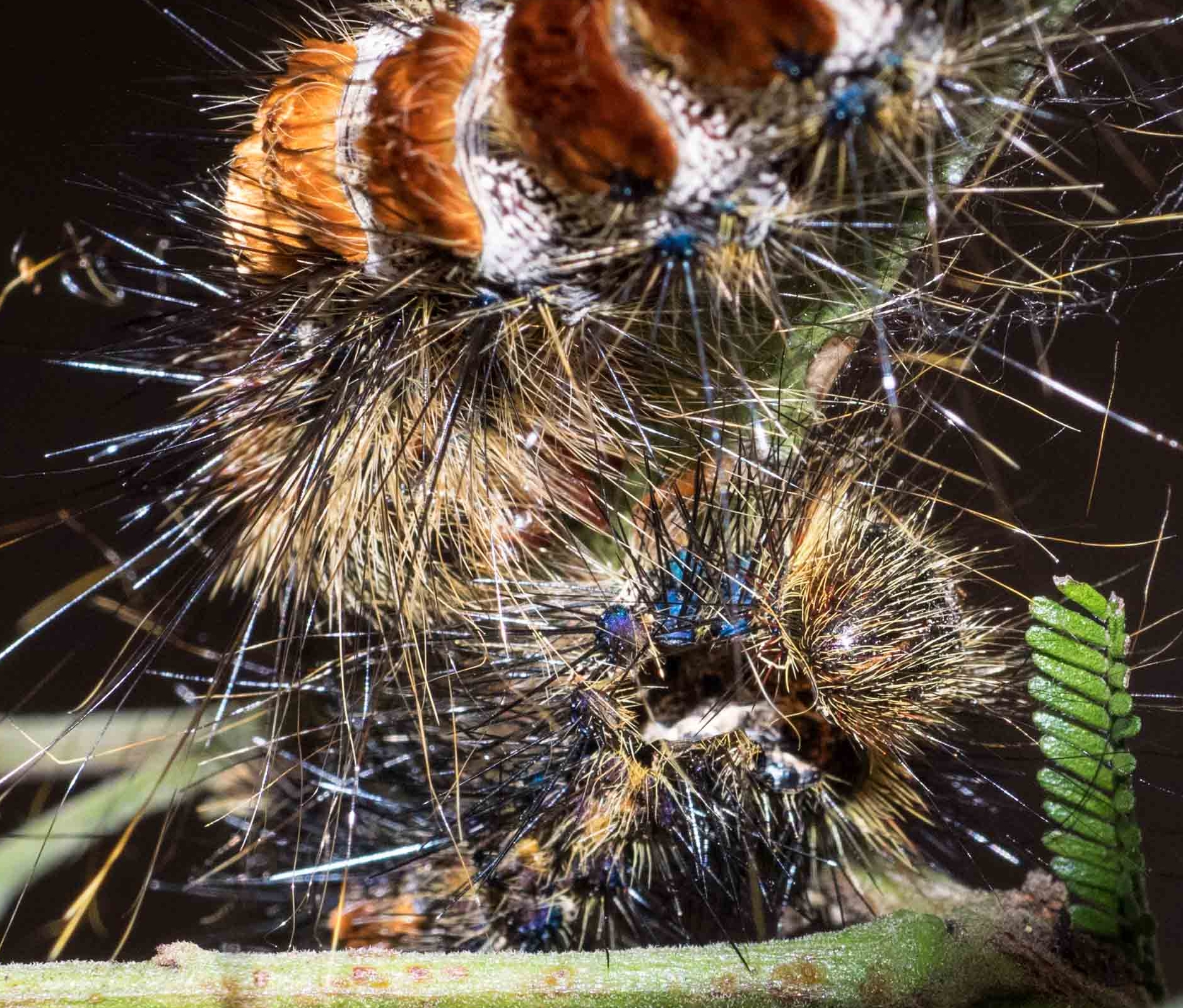Buddy update

If you’ve read many of our posts you’ll know about the buddy tank. A temporary home for the range of small creatures we raise, study and release. We usually have a good reason for adopting a buddy – larvae are often unidentifiable and for many species of insects, their life history unknown. Of course we also confess to being obsessively fascinated by invertebrate development.
I’ve been spending my days indoors. The forest is parched and often smoke-filled. There are very few flowers, sedges are turning yellow, trees lose leaves without replacement. Emerging insects are quickly snapped up by alert and hungry birds. Seems as good a time as any to simply report on the progress of our current batch of buddies - two beetles, a hawk moth and a couple of anthelids. Not a partridge nor pear tree in sight.
Baby scarabs
The fat, soft grubs of scarab beetles are familiar to anyone who has dug into organically-rich soil or decomposing vegetation.
They are sometimes called ‘curl grubs’ because of the way they hold their bodies. Or simply ‘white grubs’.
Orange head and legs. A thin-walled body, swollen at the end. Writhing and twisting when disturbed but unable to crawl away.
One of our buddies, back on 9th October
In Australia, witchetty grubs are perhaps the best-known insect larvae. There are even lollies made to look like them! However, scarab grubs and witchetty grubs are entirely different animals. The term ‘witchetty grub’ refers to the larvae of wood-boring insects … typically large moths but also some types of longhorn beetles.
I remember the taste of these from my childhood … and fifty years on they’re still for sale!
Wood-boring larva uncovered in freshly split firewood (Aug 2019) … a ‘witchetty grub’.
But I digress.
We have a pair of scarabs well on the way to becoming recognisable beetles. I ‘rescued’ them back in July while Paul was turning the compost. They were already quite large, but I had no way of identifying what species they might be. They are scarabs, and most likely chafers (subfamily Melolonthinae), but that leaves rather a lot of options. There are over 1200 known species in Australia, across more than 100 genera – a lot to choose from.
They may be quite old already. Many scarabs live as larvae for years! I realised when I adopted them that we might be in for a long wait.
So I’ve had them for months now, and they’re the easiest of pets. A bit boring, perhaps. They live in a container of soil, in the dark. Occasionally I spray it with a little water and every month or so I replace the soil with a fresh batch. When I do this, and place them atop the new soil, they soon disappear again. They dig in using their short legs and by twisting their bodies. And deep in the soil they create small caves in which they live and feed.
Then, in late November, I noticed that they’d changed. Each grub, within its own soil chamber, had moulted into a pupa.
So I tipped them out of their homes for a closer look.
My first good look at a scarab pupa. They seemed identical to each other. Each was in its own soil cave, shed larval skin alongside. (27/11/19)
Conundrum!
Should I bury them again? Tricky, as I couldn’t recreate their caves.
Would they survive out of the soil? I could only hope.
So I created a small Humidicrib for each baby, with moistened paper towel as a bed and a cover to keep out the light.
So far, so good. Three weeks on, they’re both alive and continuing to develop.
I know they’re alive because occasionally they flex their little bodies, reminiscent of small children stretching in sleep.
This 3 second video shows ‘Beetle 2’ today, Dec 21.
Recently they’ve become individually recognisable. Beetle 1 is changing rapidly, becoming darker and more colourful by the day.
Of course, nearly all the changes are internal. The cuticle has limited capacity to stretch and can’t fundamentally change shape. Inside the pupal case, all parts of the insect are being transformed and refined. The legs are a good example. A close look at the latest images show the adult legs taking shape, with their spines and narrow tarsi visible through the pupal cuticle.
Beetle 2 is changing too, but remains more golden yellow. It may be that it’s slightly younger. And perhaps it’s even a different sex. Time will tell.
Note too the suture line along the dorsal midline in the images below. This is where the pupal case will eventually split as the adult beetle breaks free.
A giant Hawk Moth
I’m 98 per cent sure of this buddy’s identity. We raised an identical caterpillar last year (see earlier post).
Huge, feeding on geebung (Persoonia), and with a head end that’s not a head at all.
The Double-headed Hawk Moth, Coequosa triangularis. There is another species in this genus with an equally large caterpillar … although I think C. australasiae lacks the false eyes.
It moulted soon after collection and then continued to feed voraciously. And to grow. Then last week it changed colour quite dramatically. As I suspected, transformation was close.
It soon stopped feeding and simply wandered the tank, restless and apparently searching for something. I supplied dirt and dead leaves and – eventually – it settled down to construct an elaborate silken shelter.
Dec 18 … final touches to the silk-lined cave
Now we wait. Last time it took 6 weeks from cocoon building to eclosion. The 29th of January may be a big day in the buddy tank.
A common anthelid
Hairy with pin-cushion spots and a characteristic ‘face’. Although I’m reasonably sure this is Anthela acuta, it’s worth raising to double-check. There are many species in the family and 56 in the genus Anthela. Best to check.
After devouring numerous long and tough grass leaves, it ceased moving and built a cocoon. The body hairs are recycled and continue to serve as protection for the developing moth.
Dec 15, just days after collection it formed a cocoon.
One more anthelid
This is a large, striped, hairy caterpillar of a type we see often, and always on the move. I found this one crossing the road. We’ve tried to raise them before but without success. They don’t feed readily in captivity.
This time I got lucky. It didn’t feed but apparently it didn’t need to. Just a day after collection, it pupated. Again we wait. If I had to guess I’d say Pterolocera, another genus in the family Anthelidae. Only time will tell.
So our holiday season child care is ridiculously simple. No feeding and no tank cleaning required. We just patiently wait for them all to take flight in the new year.
23 Dec Newsflash! Beetle 1 eclosed today!! I’m still working on a definitive ID, but all indications are he is a Rhinoceros Beetle (Family Scaradaeidae; subfamily Dynastinae). More details soon!
23/12/19 … Beetle 1, newly eclosed.































